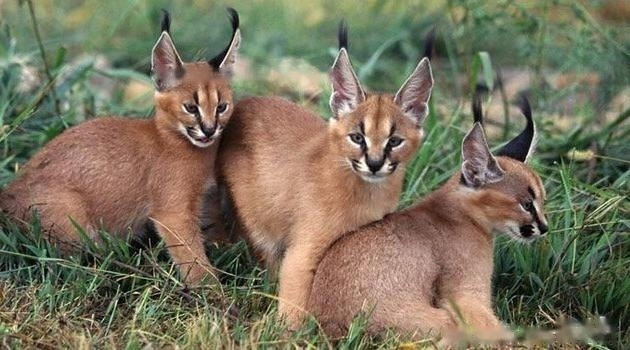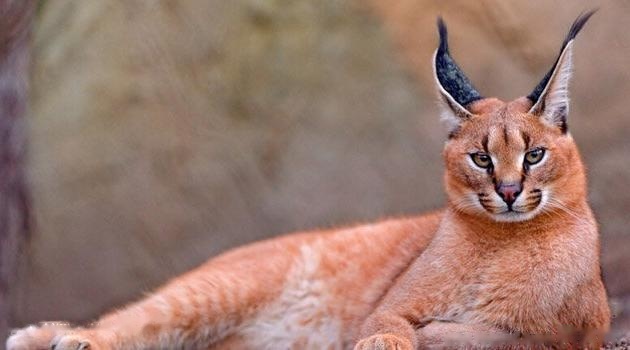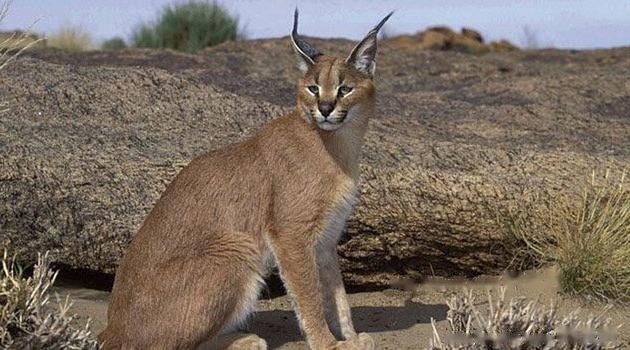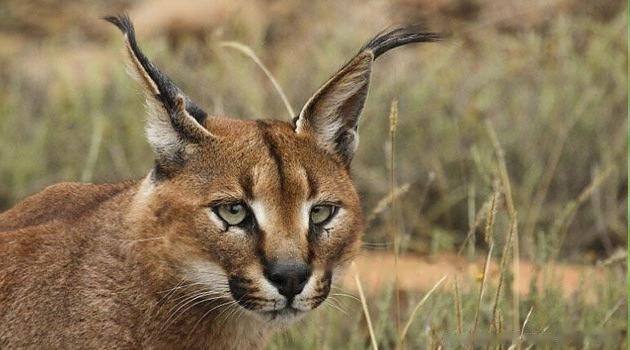The caracal is medium in size, with a variety of coat colors, and inhabits dry wilderness, although it is found in mountains, bushes, and deserts. The staple food is birds and small beasts. They live together in a small family, have a certain sense of territory, and use urine to mark the scope of the territory. The caracal has strong jumping ability, fast running speed, and can catch birds when landing or taking off. Distributed in Africa, West Asia, Northwest South Asia and other places.

1. Habits of caracal cats
Caracal cats eat hares and occasionally attack gazelles, small antelopes or young ostrich. Caracals are picky eaters and will discard the guts of mammals they catch, partially plucking hyraxes and larger prey, and removing flesh from their skin to avoid hairy eating. However, it will eat bird feathers and is tolerant of carrion. It is best known for its birding skills; the caracal can catch birds in flight, sometimes more than two at a time. Caracals can jump and climb exceptionally high, making them easier to catch hyraxes than other carnivores.

Second, caracal characteristics
Body shape: head and body length 60-92cm, tail length 23-31cm, shoulder length The height is 38-50cm, the weight is 13-18kg, the male is larger, and it is a small cat.
Head: The caracal has a large head that is well proportioned to the entire body; the eyes are particularly large and dark or brown in color; the ears are large and erect, and the tips of the ears are slightly decorated with long feathers.
Coat: The caracal has a short, dense, supple coat in burgundy, gray and sandy gray colors, as well as blackened caracals. Young caracals have red spots on their undersides; adult caracals have no stripes except for black spots above the eyes. The caracal is best known for its long, thick black ears.

3. How to raise caracal cats
Caracal cats are very rare in China and are protected animals, generally not private Because caracal cats are very difficult to raise, some experts raise them separately, and the raising method is also very cumbersome and complicated. First of all, provide the caracal with the food he likes, that is, game, such as: rabbit, ostrich, etc. Secondly, he likes free movement, and running on wide flat ground is his most fun, not suitable for captivity.
4. Growth and reproduction of caracal cats
Caracal cats can breed throughout the year, with a gestation period of 68-81 days, with 2-5 cubs per litter, 1 year old Sexual maturity. The average life expectancy of wild caracal cats is 12 years, and the life expectancy of captive cats is 17 years. Caracals in most areas do not have a fixed mating period. After a gestation period of 69-78 days, a mother cat will give birth to 1-6 kittens. Cats open their eyes at around 10 days and are weaned at 10-25 weeks. They tend to go out on their own by the time they are 12 months old. The caracal has a relatively long lifespan, about 19 years.

5. Caracal distribution area
The caracal is very rare, distributed in Afghanistan, Algeria, Angola, Benin, Botswana, Burkina Faso, Cameroon, Chad, Democratic Republic of Congo, C?te d'Ivoire, Djibouti, Egypt, Eritrea, Ethiopia, Gambia, Ghana, Guinea, Guinea-Bissau, India, Iran (Islamic Republic of), Iraq, Israel, Jordan, Kazakhstan , Kenya, Kuwait, Lebanon, Lesotho, Libya, Malawi, Mali, Mauritania, Morocco…areas.
6. How much does a caracal cost
Caracal is a protected animal, and its price is sky-high, which is generally not available in the market Yes, its price is more than 100,000. For reference only
![[Dog Training 5] The training method of pet dog dining etiquette](/static/img/12192/12192_1.jpg)







